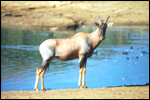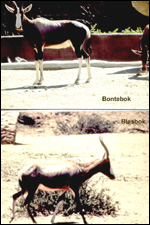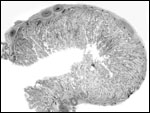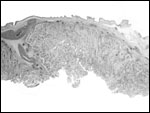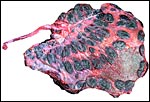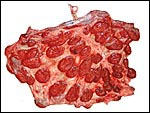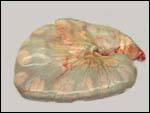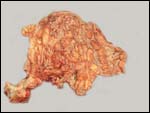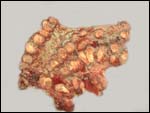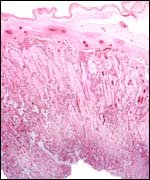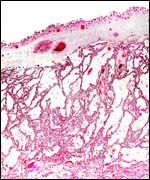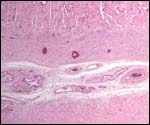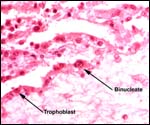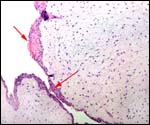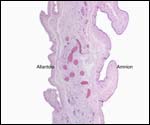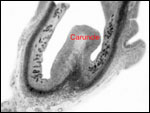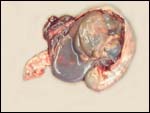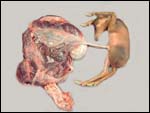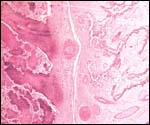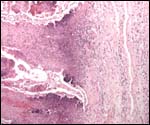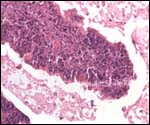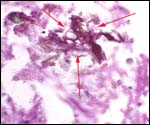|
(Clicking
on the thumbnail images below will launch a new window and a larger
version of the thumbnail.)
|
| Last updated Nov 21, 2010 |
Damaliscus lunatus korrigum
Order:Artiodactyla
Family:Bovidae
1) General Zoological Data
Topis belong to a group of antelopes with curved horns, and the horns are present in both sexes. As a group, these animals are commonly referred to as "Sassabies" (Damaliscus sp.). The group contains three species and perhaps as many as seven subspecies that differ in coloration and size, as well as in chromosomal numbers. In addition to the Topi are the hartebeest (Alcelaphus buselaphus), and bontebok (and the blesbok - Damliscus dorcas, alias hunteri), with some subspecies (Nowak, 1999). Bonteboks in zoological parks are probably not a homogeneous group of animals, probably composed of hybrids between true bonteboks (from that park) with blesboks. It should be emphasized here that there has been considerable dispute of the nomenclature concerning their species designations (see Rookmaker, 1991, and Kumamoto et al., 1996). This is further discussed with respect to the chromosomal patterns under the section on Genetics.
Topis are the most abundant animals of this group of East African antelopes. They weigh around 100 + kg as adults and have strictly defended territories. The growth rate for one topi (Damaliscus korrigum [D. lunatus korrigum]) was charted by Hutchison (1970a). It attained a weight of 132.5 kg at 30 months. The gestational length is about 7-8 months with a single calf being born. Their longevity in captivity is around 20 years. Some subspecies are now very severely endangered and are, therefore, listed as CITES I species.

